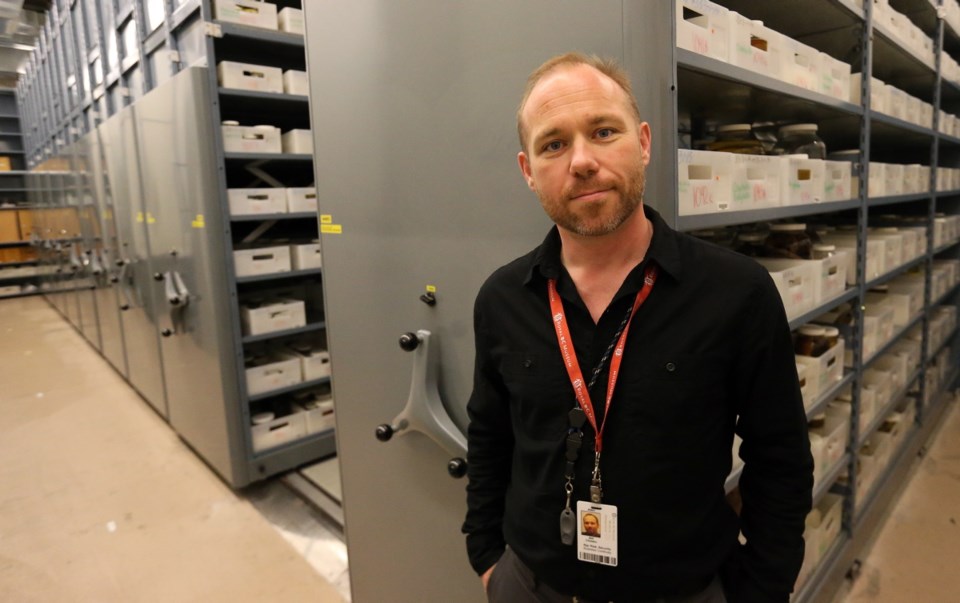If a major earthquake strikes Vancouver Island, staff at the Royal B.C. Museum will find stores of cinnamon shortbread-flavoured sustenance under their desks.
It’s more than some workplaces would do, but risk manager Bill Chimko said providing survival kits with enough food to last 72 hours is just one of the ways the museum has prepared for the Big One.
“We don’t leave anything to chance,” Chimko said.
If you’re not feeling quite so prepared, there’s an opportunity to up your game Thursday, when millions of people around the world will practise earthquake drills at 10:16 a.m.
Participants in the event, known across the province as ShakeOut B.C. Day, will “drop, cover and hold on,” as if the ground were shaking.
By Tuesday afternoon, 105,893 capital region residents had registered to take part, including museum staff, as well as government agencies, businesses, schools, individuals and others.
Some organizations and individuals face different challenges than others.
Dropping, covering and holding on can be physically difficult for seniors, said Greg Askham, executive director of Legion Manor Victoria, which will participate in ShakeOut for the first time. It’s also difficult to train people who have dementia and Alzheimer’s disease.
To prepare, residents will discuss what to do in case of an earthquake rather than going through the motions. Family members are also encouraged to help secure heavy furniture and objects.
At the Juan de Fuca Recreation Centre, the varied age groups who use the facility can pose a challenge. Children may be participating in programs in one room, while their parents are in another part of the building, said maintenance worker Manjit Rouxel, who has earthquake-response training.
Despite the instinct to immediately find family members, facility users are encouraged to drop, cover and hold on, first. Staff are trained to guide people, after the dust settles, to the parking lot, where they can reconnect with family.
In addition to providing staff survival kits, the Royal B.C. Museum is also protecting its treasures. Things that fit on shelves and in storage units are stored in ways to minimize damage. Jars, for example, are stored on shelves secured to walls and in cases secured with a large lip to prevent any spillage from spreading.
Conservation staff are also trained to recover archives, artifacts and documentation.
“When an earthquake hits downtown, access will be a problem. So we have to enable as many staff as we can to do recovery work,” Chimko said.
Hospital staff are also trained beyond “drop, cover and hold on,” according to Krystal Hanson, co-ordinator of health emergency management B.C., and Sue Munro, corporate director for health emergency management B.C. Vancouver Island.
That includes everything from making staff aware of protocol in case of a power outage to identifying patients who can’t walk and ways to help guide them to safety if necessary. In a pinch, even a commode (a portable bedside toilet on wheels) can be used in place of a wheelchair, Hanson said.
“Code Orange” tells staff to prepare for a disaster or mass casualty. Strategically placed storage trailers will be filled with a backup supply of potable water and there are multiple communications systems in place, including radio systems, satellite phones and disaster recovery phones.
Vancouver Island hospitals are also part of a network of emergency operation centres — if one hospital is in crisis, others in the region are prepared to act as supports.
As part of ShakeOut, Campbell River, Nanaimo General, Victoria General and Royal Jubilee hospitals will practise communicating as emergency operations centres.
“It’s very difficult to prepare for the unknown, when we don’t know where [the earthquake] is going to happen or how big it’s going to be,” Munro said.
“But we’re always working toward being more prepared.”



